ADDICTION
ALCOHOL DEPENDENCE
QUIT SMOKING
ALLERGY
ANTI FUNGAL
FUNGAL INFECTION
FUNGAL NAIL INFECTIONS
ANTI-REJECTION DRUGS
ANTI WORM
ANTIBIOTIC
BACTERIAL INFECTIONS
ARTHRITIS
GOUT
OSTEOARTHRITIS
RHEUMATOID ARTHRITIS
BLOOD
LOW PLATELET COUNT
THROMBOPHLEBITIS
VARICOSE VEINS
COLON
ANAL FISSURE
PILES
ULCERATIVE COLITIS
DIABETES CARE
DIABETES INSIPIDUS
DIABETES TYPE
DIABETIC FOOT ULCERS
GLUCOSE MONITOR
EYES/EAR CARE
DRY EYES
EYE CARE
EYE EXAMINATION
EYE INFECTION
EYE LASHES
EYE PAIN
GLAUCOMA
OCULAR HYPERTENSION
UVEITIS
FEVER CARE
MALARIA
RHEUMATIC FEVER
TYPHOID FEVER
GASTROINTESTINAL
ACIDITY
CONSTIPATION
CROHN'S DISEASE
DIARRHOEA
GALLBLADDER STONES
INTESTINAL ULCERS
IRRITABLE BOWEL SYNDROME
MOTION SICKNESS
NAUSEA
Tiniba 300 mg (Tinidazole)
| Active Ingredient (Generic Name): | Tinidazole |
|---|---|
| Indication: | Bacterial infections, Parasitic infections |
| Manufacturer: | Zydus Cadila Pharma |
| Packaging: | 10 tablets in one strip |
| Strength: | 300 mg |
From: $31.00
You have been prescribed Tiniba 300 Mg, a tablet containing 300 mg of tinidazole, an antibacterial and antiprotozoal agent effective against anaerobic bacteria, Giardia lamblia, and Entamoeba histolytica infections. This medication is used to treat trichomoniasis, giardiasis, and amoebiasis, and is also effective against bacterial vaginosis and pelvic inflammatory disease. Tinidazole works by inhibiting nucleic acid production, disrupting cell membrane structure, and interfering with redox reactions. As you explore Tiniba 300 Mg further, you will learn about its benefits, potential interactions, and precautions to ensure safe and effective use.
Main Points
- Tiniba 300 Mg comprises 300 mg of tinidazole, an antibacterial and antiprotozoal agent effective against anaerobic bacteria, Giardia lamblia, and Entamoeba histolytica.
- Tinidazole is used to treat trichomoniasis, giardiasis, and amoebiasis, as well as bacterial vaginosis and pelvic inflammatory disease.
- Its mechanism of action involves inhibiting nucleic acid production, hindering protein synthesis and microbial metabolism, and disrupting cell membrane structure.
- Tinidazole may interact with medications such as warfarin, phenytoin, and ciclosporin. Caution is advised for patients with liver disease, kidney disease, or hypersensitivity.
- The recommended dosage ranges from 2 to 4 grams, divided into 2-3 doses, and should be taken with food to reduce stomach upset.
What Is Tiniba 300 Mg?
Tiniba 300 Mg is a medication containing 300 mg of tinidazole, an antibacterial and antiprotozoal agent used to treat various bacterial and parasitic infections. It comes in tablet form for easy administration. Tinidazole is a synthetic compound effective against a wide range of microorganisms, including anaerobic bacteria, Giardia lamblia, and Entamoeba histolytica. Its mechanism of action involves inhibiting nucleic acid production in microorganisms, leading to their death and clearance of infections. Understanding Tiniba 300 Mg‘s role in combating bacterial and parasitic infections is crucial.
Uses of Tinidazole Tablets
Tiniba 300 Mg contains tinidazole and is prescribed to treat various bacterial and parasitic infections like trichomoniasis, giardiasis, and amoebiasis. It is effective against anaerobic bacteria causing infections such as bacterial vaginosis and pelvic inflammatory disease. It can also treat giardiasis, a parasitic infection affecting the small intestine. Treatment durations for different infections are as follows: trichomoniasis (2-3 days), giardiasis (5-7 days), amoebiasis (3-5 days), and bacterial vaginosis (5-7 days). Follow your doctor’s instructions carefully, complete the full treatment course, and consult them for any other infections not mentioned.
How Tiniba 300 Mg Works
Exploring the workings of Tiniba 300 Mg reveals its effectiveness through intricate mechanisms. Tiniba 300 Mg targets bacterial and protozoal infections, utilizing its anti-infective properties to treat various diseases. Understanding these processes provides insight into Tiniba 300 Mg’s antiprotozoal effects, making it a valuable treatment option.
Mechanism of Action
Upon ingestion, Tiniba 300 Mg initiates a series of biochemical reactions that impede the synthesis of DNA and RNA, crucial for microbial growth. This inhibition extends to microbial metabolism, hindering protein synthesis and leading to reduced microbial growth. Additionally, Tiniba 300 Mg disrupts cell membrane structure, causing lysis of microbial cells, and interferes with redox reactions, hampering electron transport and reducing microbial energy production. These combined actions effectively combat microbial infections, alleviating symptoms and promoting recovery.
Anti-Infective Properties
Tiniba 300 Mg’s anti-infective properties disrupt microbial cell membrane structure and interfere with essential metabolic processes, effectively combating a wide range of microbial infections. Its effectiveness is particularly notable against anaerobic bacteria and certain parasites. The mode of action involves inhibiting nucleic acid synthesis crucial for microbial growth and replication, thereby preventing cell proliferation. By interfering with DNA synthesis, the growth and multiplication of microorganisms are significantly impeded, allowing the body to regain control over the infection. Additionally, Tiniba 300 Mg inhibits the production of specific enzymes necessary for microbial metabolism, targeting microbial cells at various life cycle stages for comprehensive protection against infections.
Antiprotozoal Effects
Exploring Tiniba 300 Mg’s mechanism of action reveals its significant antiprotozoal effects. These effects result from its ability to disrupt the metabolic pathways of protozoa, hindering their survival and reproduction. By interfering with DNA synthesis, Tiniba 300 Mg effectively inhibits the growth and multiplication of various protozoa.
Here is a breakdown of Tiniba 300 Mg’s antiprotozoal effects on different protozoa:
- Giardia lamblia: Inhibits DNA synthesis, leading to impaired growth and replication
- Trichomonas vaginalis: Disrupts energy metabolism, causing cellular damage and death
- Entamoeba histolytica: Interferes with DNA replication, hindering amoebic growth and survival
- Plasmodium falciparum: Inhibits protein synthesis, impairing parasite development
- Blastocystis hominis: Impedes DNA synthesis, leading to reduced parasite growth and replication
Tiniba 300 Mg’s selective targeting of protozoa’s metabolic pathways makes it an effective treatment for various protozoal infections.
Benefits of Tinidazole Treatment
Tinidazole stands out due to its ability to target a wide range of microorganisms effectively, providing comprehensive coverage against various infections. This broad-spectrum activity allows for the simultaneous treatment of multiple infections, simplifying the overall treatment process.
Patients benefit from the convenience of a single medication that can address various health issues. Tinidazole‘s antiprotozoal properties are particularly effective in managing giardiasis, trichomoniasis, and other parasitic infections, while its antibacterial properties combat bacterial vaginosis and other infections.
Moreover, tinidazole’s ability to inhibit the growth of anaerobic bacteria can help alleviate symptoms related to bacterial vaginosis, such as abnormal vaginal discharge and odor. By targeting the root causes of these infections, tinidazole treatment can enhance overall health and well-being.
Side Effects of Tiniba 300 Mg
When taking Tiniba 300 Mg, you should be aware of potential side effects. Common complaints include gastrointestinal issues like nausea and stomach pain. Central nervous system disturbances, skin reactions, and other adverse effects may also occur.
Gastrointestinal Side Effects
Gastrointestinal side effects are common in patients taking Tiniba 300 Mg. Symptoms can range from mild stomach discomfort to severe diarrhea, including nausea, vomiting, abdominal pain, a metallic taste in the mouth, and decreased appetite. Staying hydrated by drinking fluids is important to manage these symptoms. If severe side effects occur, consult a doctor for guidance. In rare cases, Tiniba 300 Mg can lead to serious gastrointestinal issues like pancreatitis or pseudomembranous colitis. Seek immediate medical attention if you experience severe abdominal pain, bloody stools, or vomit blood. Monitoring and adjusting the treatment plan may be necessary to address any gastrointestinal side effects.
Central Nervous System
Experiencing central nervous system side effects while taking Tiniba 300 Mg, such as headaches, dizziness, and fatigue, is crucial to monitor as it can affect your daily activities. These symptoms may vary in intensity, so it is important to promptly inform your doctor if they persist or worsen. In rare instances, Tiniba 300 Mg can lead to more serious central nervous system side effects like seizures, tremors, or involuntary muscle contractions, necessitating immediate medical attention.
Mood changes, including anxiety, depression, or agitation, are also possible while on Tiniba 300 Mg. These changes can be significant and may require adjustments in dosage or additional therapeutic measures. Regular monitoring by your doctor to assess your mental well-being and modify the treatment plan accordingly may be advised. By recognizing and addressing these potential central nervous system side effects, you can effectively manage them and ensure a safe and successful treatment course with Tiniba 300 Mg.
Skin Reactions Reported
Skin reactions, such as rash, itching, or redness, may occur while taking Tiniba 300 Mg. These reactions can vary in severity and may affect your daily routine. Symptoms may include urticaria, pruritus, or erythema, and in rare cases, more serious conditions like Stevens-Johnson syndrome or toxic epidermal necrolysis could develop. If you notice any skin reactions, it is essential to seek advice from your healthcare provider promptly.
Skin reactions may be accompanied by other symptoms like fever, swelling, or discomfort. Monitoring your skin for any unusual changes and promptly informing your healthcare provider is crucial. In severe cases, adjusting the Tiniba 300 Mg treatment or discontinuing it may be recommended to reduce the risk of skin reactions. It is important to discuss any concerns with your healthcare provider and carefully consider the benefits of the treatment in relation to potential risks.
Common Tinidazole Interactions
Tinidazole, a nitroimidazole antibiotic, may interact with medications such as warfarin, phenytoin, and ciclosporin, potentially leading to adverse effects or reduced efficacy. Caution is advised when taking tinidazole alongside these medications due to significant interactions.
Co-administration of tinidazole with warfarin, a blood thinner, can increase the risk of bleeding. Dose adjustments may be necessary by your doctor to prevent bleeding complications. Similarly, tinidazole may elevate phenytoin levels in the blood, resulting in side effects like drowsiness, confusion, or loss of coordination.
Furthermore, when tinidazole is taken with ciclosporin, an immunosuppressant, there is an increased risk of adverse effects. Monitoring of ciclosporin levels and dose adjustments may be required by your doctor. To minimize the risk of interactions, it is essential to inform your healthcare provider about all medications you are taking. Understanding these potential interactions can help ensure the safe and effective use of tinidazole.
Precautions and Contraindications
Patients with liver disease, severe kidney disease, pregnancy, breastfeeding, a history of hypersensitivity to tinidazole, or cancer receiving chemotherapy should exercise caution when considering tinidazole treatment. It is important to discuss your medical history and current medications with your healthcare provider to ensure safe and effective use of tinidazole.
Dosage and Administration Guide
Follow your healthcare provider’s instructions precisely when taking tinidazole. Typically, the daily dosage ranges from 2 to 4 grams, divided into 2-3 doses, depending on the type of infection. Take tinidazole with food to reduce stomach upset. If you are also taking antacids, sucralfate, or vitamins, ensure there is a 2-hour gap before or after taking tinidazole. Swallow the tablets whole with a full glass of water; do not crush, chew, or break them. If you miss a dose, take it as soon as you remember. If it is close to your next scheduled dose, skip the missed one. Do not double up on doses. Consult your healthcare provider if you have any questions or uncertainties about your dosage.
Storage and Disposal Instructions
When storing tinidazole, ensure it is kept in a tightly closed container, away from children, and shielded from light, heat, and moisture. Store the medication at room temperature, between 15?C to 30?C (59?F to 86?F) to maintain its potency and effectiveness.
Follow these storage and disposal guidelines:
- Keep tinidazole in its original packaging or container to protect it from light and moisture.
- Always close the container tightly when not in use to prevent contamination.
- Avoid storing tinidazole in the bathroom or near a sink to prevent humidity and temperature fluctuations from affecting the medication.
- Do not freeze or refrigerate tinidazole as it can change its chemical composition.
- Dispose of any expired or unused tinidazole tablets properly by following instructions from your pharmacist or local authorities.
Frequently Asked Questions
Can I Take Tiniba 300 Mg With Other Medications Simultaneously?
Before combining Tiniba 300 mg with other medications, it is important to proceed with caution. Assessing potential drug interactions is essential to avoid compromising their efficacy or increasing the risk of adverse effects. Consulting a healthcare professional, such as a doctor or pharmacist, before mixing medications is recommended. They can help identify any potential interactions and provide guidance on necessary adjustments to your treatment plan.
Is Tiniba 300 Mg Safe for Use During Pregnancy or Breastfeeding?
When considering medication during pregnancy or breastfeeding, caution is advised. Antibiotics such as Tinidazole, like Tiniba 300 mg, are generally not recommended during pregnancy, particularly in the first trimester, due to potential effects on fetal development. For breastfeeding, it is important to carefully weigh the benefits and risks. Consult a healthcare provider for personalized guidance based on your individual circumstances.
Can I Consume Alcohol While Taking Tiniba 300 Mg Tablets?
It is advisable to avoid consuming alcohol while taking Tiniba 300 mg tablets. Alcohol can worsen side effects such as dizziness, nausea, and stomach discomfort. Moreover, it may diminish the effectiveness of the medication and elevate the risk of liver damage. For personalized advice on alcohol intake while using Tiniba 300 mg, consult your healthcare provider or pharmacist.
How Long Does It Take to See the Effects of Tiniba 300 Mg Treatment?
The time it takes to observe the effects of Tiniba 300 mg treatment can vary depending on the infection and individual response. Improvement may be noticed within 2-5 days, with full effects potentially taking up to 7-10 days. It is advisable to be patient and consult your doctor if you have any concerns or questions during the treatment process.
Is Tiniba 300 Mg Available Over-The-Counter or by Prescription Only?
Tiniba 300 mg, containing the active ingredient tinidazole, is typically available by prescription only in most countries. To obtain this medication, you will need to consult a healthcare professional for an evaluation of your condition and a prescription if deemed necessary. It is important to follow the guidance of a doctor to ensure safe and effective treatment. Avoid self-medication and seek professional medical advice.
Conclusion
You have been prescribed Tiniba 300 mg, which contains tinidazole. Understanding its uses, mechanism of action, benefits, and potential side effects is crucial for safe and effective use. Follow the dosage instructions carefully and be mindful of any interactions or contraindications. Store and dispose of the medication properly to maintain its effectiveness and avoid any harm. Adhering to these guidelines will help you maximize the benefits of tinidazole treatment.


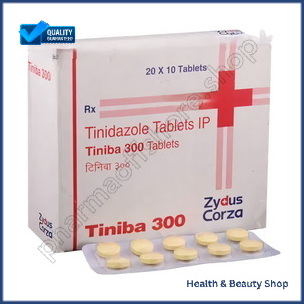
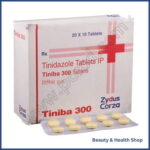
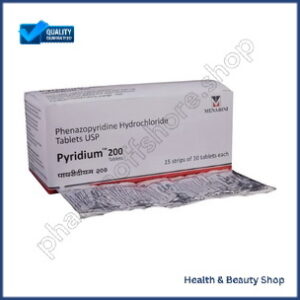
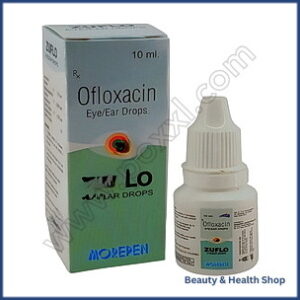
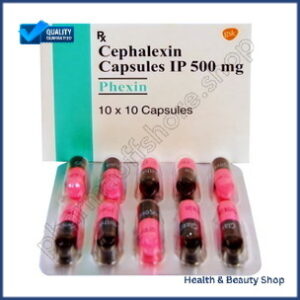

There are no reviews yet.